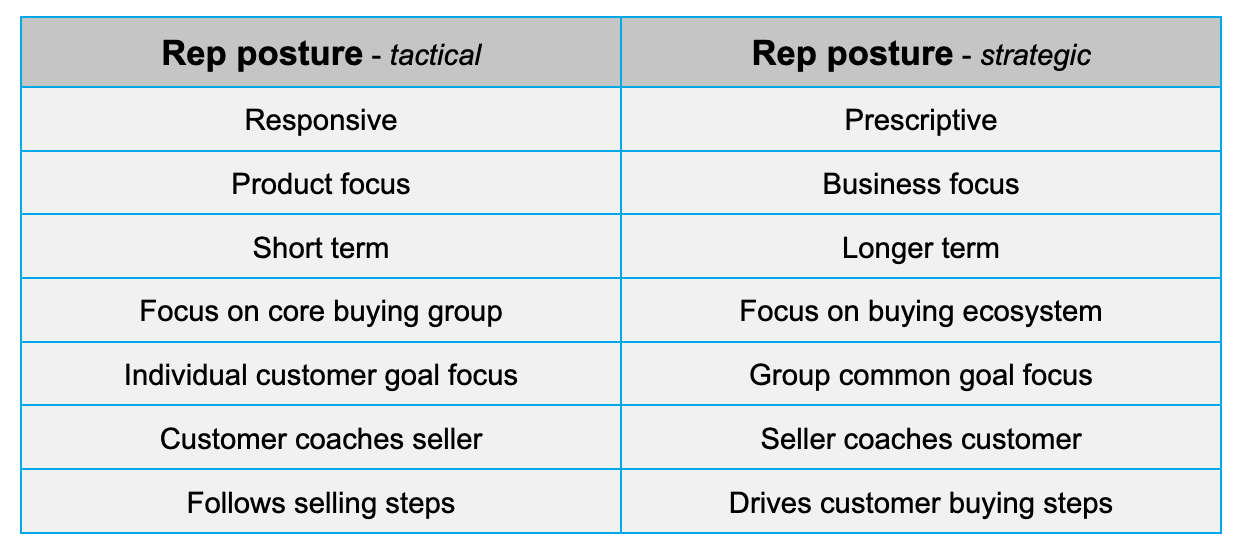Why some salespeople underestimate the value of deep, context based, customer understanding and the impact on the adoption of sales training
Buyers engage with suppliers to find solutions that drive business improvement. However, salespeople often face genuine challenges that hinder their ability to truly understand customer needs and strategic goals. This can result in a weaker, product-focused selling approach that limits success.
While sales training and coaching are essential, sellers often revert to old habits, diminishing the return on investment. To address this, it is helpful to understand the underlying challenges and implement effective strategies for change.
Challenges to Deep Customer Understanding
Here's a breakdown of some key challenges and their potential consequences:
1. Short-Term Focus & Pressure to Close:
Quota Pressure: The constant pressure to meet quotas can lead to a transactional mindset, prioritising immediate wins over building long-term, strategic relationships.
Commission Structures: If compensation is heavily weighted towards closed deals, sellers may be incentivised to push products rather than investing time in understanding customer needs and aligning solutions with broader business objectives.
2. Lack of Training & Development:
Product-Centric Training: Traditional sales training often emphasises product features and benefits, potentially overlooking critical skills in strategic analysis, business acumen, and consultative selling.
Limited Exposure to Customer Strategy: Salespeople might have limited opportunities to interact with senior customer stakeholders or gain deep insights into the organisation's strategic priorities.
3. Overconfidence & Assumptions:
"I know my customer": Even the most experienced salespeople can fall into the trap of assuming they already understand their customers, leading to missed opportunities to uncover evolving needs and priorities.
Focus on "Selling" not "Solving": An overemphasis on persuasive techniques can overshadow the importance of understanding customer challenges and demonstrating how solutions fit into their overall business strategy.
4. Perceived Time Constraints:
"No time for deep dives": Sales cycles can be long and complex, leading to the perception that there's no time for in-depth customer research or strategic discussions.
Fear of "getting bogged down": Some salespeople might worry that delving too deeply into customer complexities could slow down the sales process.
5. Inadequate Tools & Resources:
Lack of Customer Insight Tools: Sales teams may lack access to comprehensive CRM systems or other tools that provide a 360-degree view of the customer's business.
Limited Collaboration with Other Functions: Silos between sales, marketing, and customer success can hinder the effective sharing of customer insights.
Consequences of Underestimating Customer Understanding:
Missed Opportunities: Failing to grasp the customer's strategic goals can lead to missed opportunities to offer valuable solutions.
Price Sensitivity & Commoditisation: Without a clear understanding of how solutions align with customer objectives, offerings may be viewed as commodities.
Weaker Customer Relationships: Superficial relationships based on transactions are less likely to result in repeat business and referrals.
Shifting the Sales Approach
To foster deep customer understanding, we have an opportunity to shift from a tactical, product-focused approach to a strategic, customer-centric one. This in part involves changing posture:
It is important to note that any new approach should not be seen as "either or..." Rather as a "yes and..." approach. Not either we take the posture of strategic thinking and planning and not tactical, but rather yes, let's be tactical when needed and also develop a strong strategic approach that is longer term and prescriptive.
Other Potential Strategies for Improvement:
Celebrate "wins" beyond closed deals: Recognise efforts in building relationships, gaining customer insights, and demonstrating measurable business improvements.
Challenge assumptions: Actively challenge assumptions about customers and seek to understand their perspectives.
Integrate into existing processes: Incorporate customer business discovery into existing sales processes, such as needs analysis and proposal development.
Cross-functional collaboration: Collaborate with pre-sales, marketing, and customer success to gather and share customer insights.
Advocate for adjustments: Work with sales leadership to adjust commission structures to reward behaviours that support deeper customer understanding.
Leveraging the Thinking Planner
The thinking planner acts as a catalyst for developing the skills and mindset necessary for deep customer understanding. Here's how it helps:
Promotes a Strategic Approach: By encouraging a business context-based win theme, the planner shifts the focus from simply closing deals to understanding the customer's broader needs and aligning solutions with their long-term goals.
Provides a Consistent Coaching Framework: The planner is most effective when combined with consistent, skills-based coaching, reinforcing learning and ensuring that sellers apply the concepts correctly.
Develops Second-Nature Thinking: Over time, the planner helps to instil a strategic mindset in sellers, making them less likely to fall into the trap of simply "selling" instead of "solving."
Key Takeaways and Action Items
For Sales Leaders:
Prioritise training and coaching on the thinking planner.
Foster a culture that values deep customer understanding and long-term relationships.
Align supporting teams, incentives and reward systems to support these goals.
For Individual Sellers:
Embrace the thinking planner as a tool for continuous learning and improvement.
Actively seek opportunities to deepen your understanding of customer needs and business goals.
Collaborate with colleagues and leverage available resources to gain a comprehensive view of your customers.


